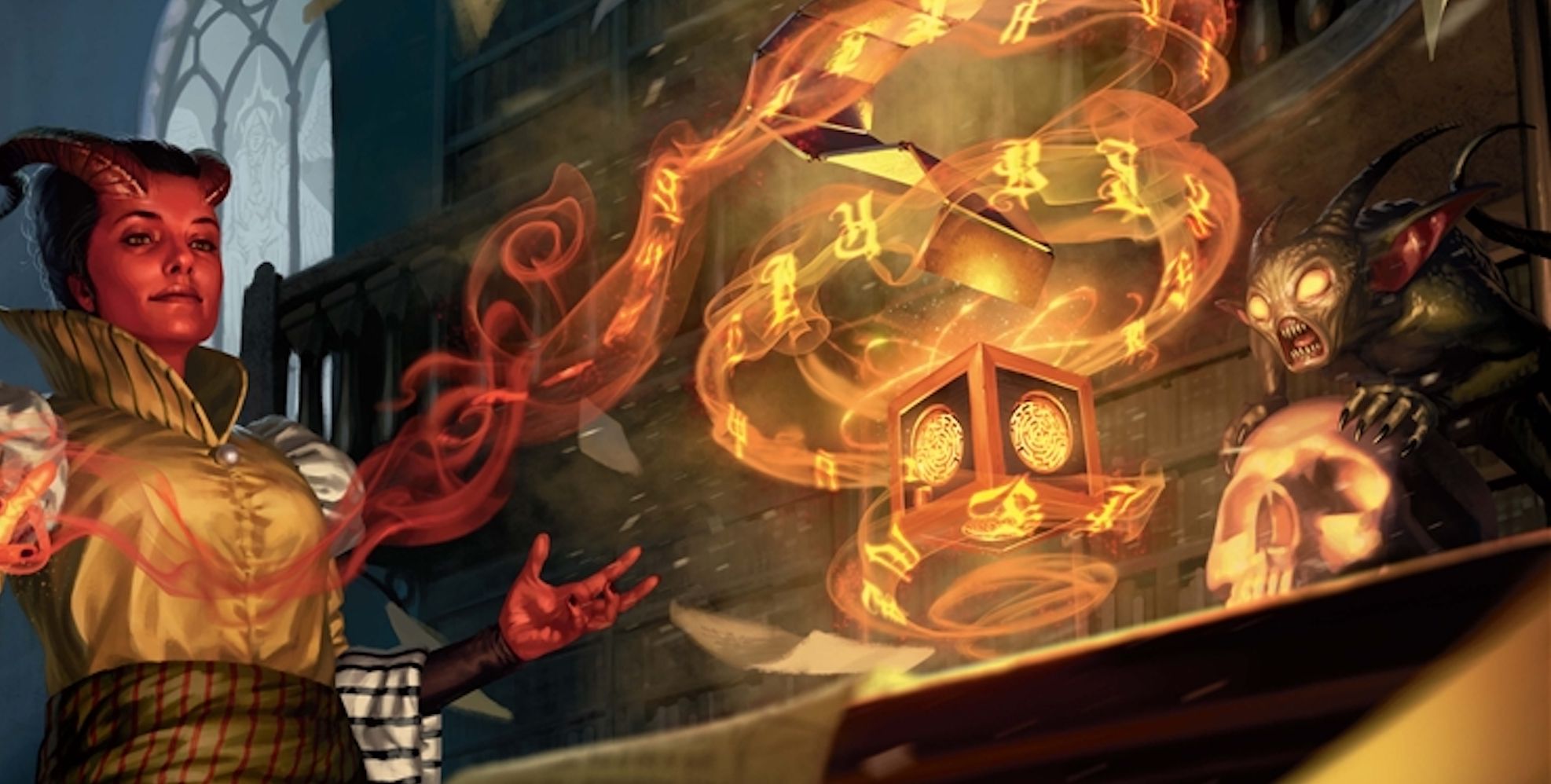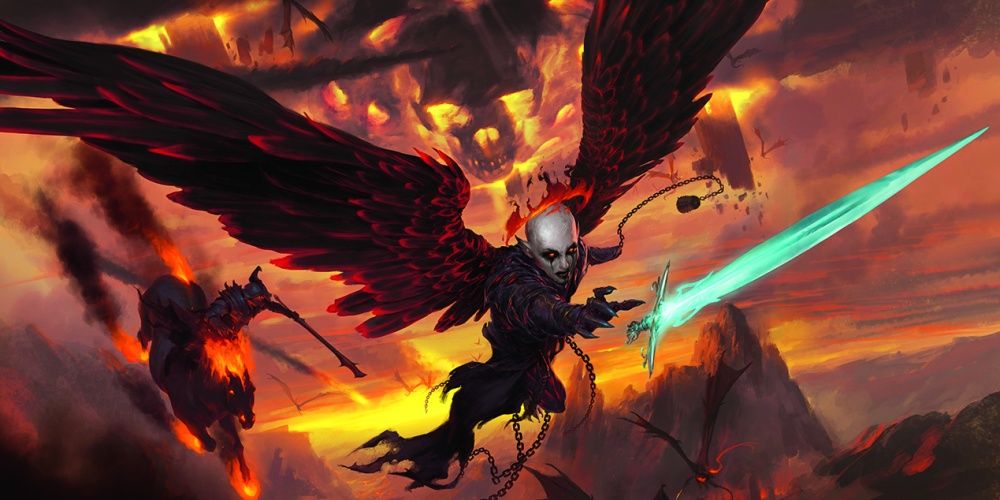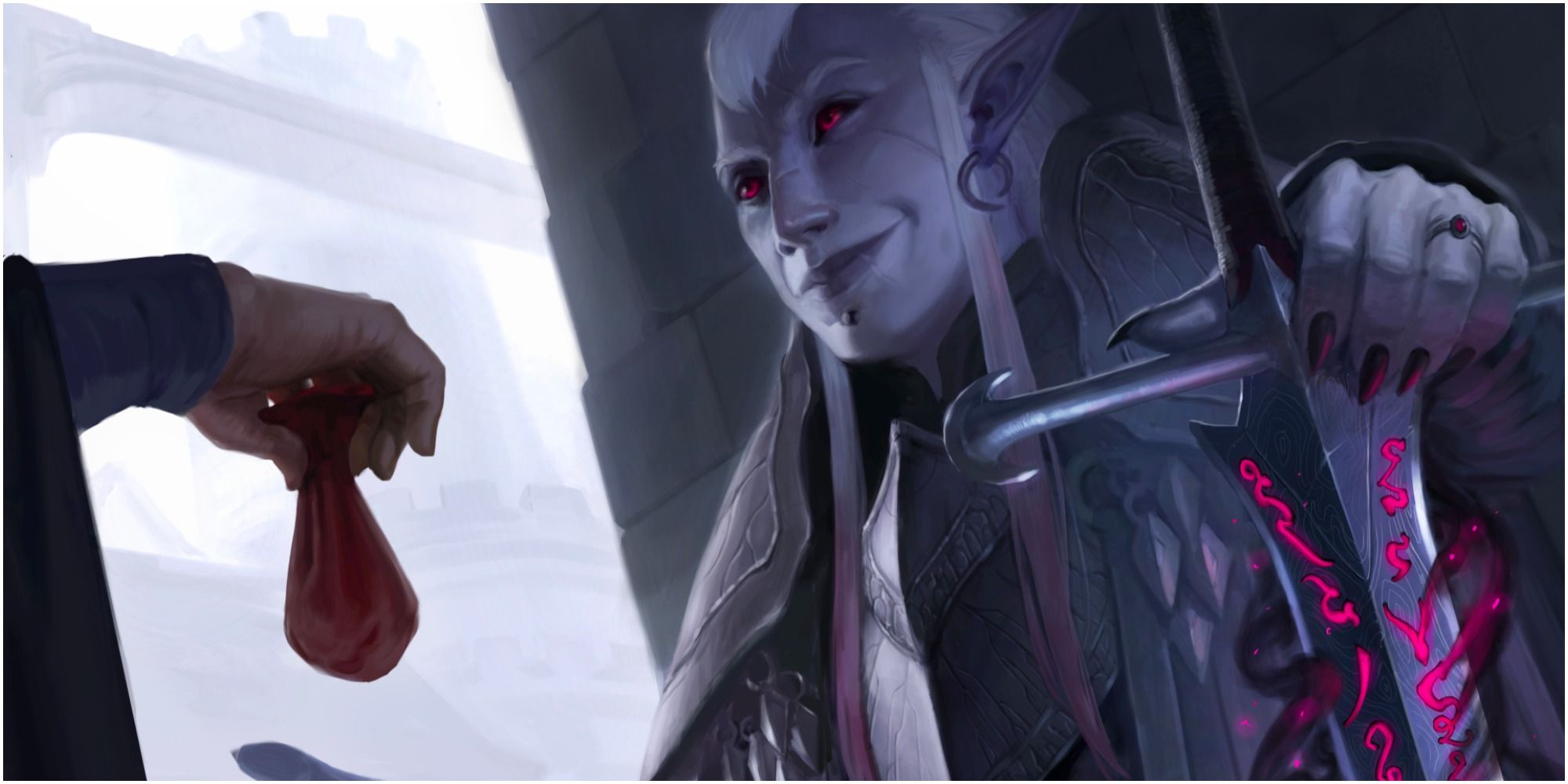For the warlocks who love the idea of running around a battlefield and brandishing a magical weapon, eldritch blasting away when the going gets rough, Dungeons & Dragons cultivated a spell-slinging martial fighter in the form of the Hexblade warlock.
Hexblade warlocks are similar to bladesingers in playstyle, save for the fact that they have a mysterious patron granting them power through their weapon, which allows them to use Charisma in place of Strength or Dexterity. Perhaps one of the more misunderstood patrons, Hexblades enact their will and teach arcane secrets to their warlocks just as any other patron may, though they may seem challenging to navigate at first glance.
What Is The Hexblade Patron?
There’s a fundamental misunderstanding within the community surrounding the Hexblade patron, and that misconception comes from the nature of the Hexblade. Frequently, the patron is depicted as the weapon the warlock wields, whispering dark secrets in the ear of the adventurer and blackmailing them when they see fit.
Some Dungeon Masters have even hesitated to have the Hexblade at their table because they believed the warlock was getting a high-powered magical weapon by virtue of the class!
As written, the Hexblade is actually a denizen of the mysterious Shadowfell, crafting and imbuing weapons with dark magic. This denizen manifests through their weapons and operates on another plane or in another area while the warlock learns how to wield weapons in the way the patron wields the blades.
They may also choose to use the magic and forgo the blade entirely, utilizing the curses they’ve learned in their magical studies.
In canon, the entity forging the swords is thought to be the Raven Queen. This is unconfirmed but generally accepted.
Common Homebrew Lore
However, as Dungeons & Dragons has grown in popularity, so too have the interpretations of the Hexblade patron. For starters, many people interpret the patron beyond the scope of the Shadowfell, with some descending to the Hells or the Underdark for their warlock abilities.
Some players have deities, like Lolth or Asmodeus, who take an interest in their warlocks, bestowing a weapon in much the same way in the original text.
These weapons may originate from different planes, providing more flavor for players interested in the Hexblade but uninterested in the Shadowfell. This is an effective effort to make the subclass and patron creation more accessible and fun for some players’ peace of mind.
Others return to the widely popular sentient weapon patron, deciding to let their Hexblade wield their patron, perhaps lending themselves to a symbiotic relationship between the two as they level together. The patron may be trapped within the blade, or simply speaking through it.
With as much variance as the Hexblade supplies, this patron performs supremely well as a generalized patron figure and can reasonably slot into almost any background.
A lot of Pact of the Blade features are often mistaken for the Hexblade warlock’s abilities. In fact, Pact of the Blade and Hexblade are often spoken of interchangeably. You will still have to choose Pact of the Blade to access certain features, so read through both!
Hexblade Pacts
The nature of a Hexblade pact isn’t detailed within the text. Still, the very nature of a magical weapon or magical blacksmith gives your character some interesting motivations right off the bat. One way to swing it would be to think about the nature of weapons instead.
Weapons were created as tools to harm others, so the Hexblade patron may be more bloodthirsty than other patrons. They may ask their warlocks to attack certain marks or eliminate specific guilds through slaughter.
Encouraging power within their warlocks, a Hexblade patron may use them as an instrument of their vengeance or boredom, carving bloody swathes through the campaign.
These patrons might abhor gutlessness and timidity, rewarding the bold for their obedience. They may even crave power through blood.
If a more tempered approach is wanted, a pact could be formed through the Hexblade Patron seeking redemption for their actions in life, binding themselves to a weapon to live vicariously through a warlock performing courageous deeds.
Another thought is to make them a patron who requires the warlock to slay monsters threatening the weak, teaching magic to them in return for their service.
There are a lot of reasons a patron may want to form a pact. Here are some suggestions:
- The patron may wish to keep magical artifacts out of other people’s hands.
- The weapon binds itself to you due to a victory over its previous owner, wishing to influence someone more powerful.
- The patron is the demon lord Graz’zt, seeking to ascend by manipulating the goddess Waukeen’s clergy for his own gain. You are his blade on the material plane!
- You received the blade after an honorable family member perished. It whispers arcane secrets to you when you attempt to sleep, and you make a pact to stop yourself from going mad. Thus begins your redemption arc.
- The patron seeks souls for her personal army on another plane. Magic in exchange for eventual soldiers. You’ll be one of many if you eventually misstep.
- You stole the blade from the patron or promised service in return for power. Little does your patron know that you’ve run off and have no intention of doing any of it. So you think.
The Benefit Of A Hexblade Patron
Aside from the obvious joy of playing the Dungeons & Dragons version of a spell blade, the Hexblade abilities are pretty special. Hexblade’s Curse is a great early feature, and Accursed Spector is incredibly utilitarian. The Hexblade subclass also multiclasses well into martial classes like fighter and paladin, making it an ideal choice for a player looking to dip into warlock.
The Hexblade Patron can almost be described as an action-oriented patron, lacking the plots of fiendish, fey, celestial, or elemental patrons. It’s very cut and dry, as written, and if one goes the sentient weapon route, it becomes harder to emphasize the power dynamic while the warlock is wielding it.
This is a fabulous patron for a newer player or someone trying to wean off martial classes and play a spellcaster.
This is not typically a patron that asks much in the way of politics of its warlock, and if it does, then the warlock is doing more physical work than wining and dining. The creativity in developing the story and dynamic is loosely defined enough at most tables that you can sort of play with the flavor.




